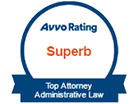My last blog talked about the central issues of scope of criminal activity and actual loss in a mortgage fraud federal sentencing hearing. The recent case of U.S. v. David McCloskey, 2013 U.S. Dist. Lexis 168220 (November 26, 2013), discusses numerous issues guilty pleas or guilty verdicts these cases present. This blog shall discuss the secondary, but equally important, sentencing enhancements based upon the number of victims, type of scheme, leadership roles, and obstruction of justice. These cases typically involve forged appraisals, engaging in mortgage brokering without a license, submitting fraudulent bank and asset information upon which mortgage qualification documents are based (this fake W-2 forms, bank account statements, asset information) and complex clients . Please review http://www.phila-criminal- lawyer.com/Publications/201031202-Hark.pdf, and my other published articles for a simple discussion of the process of a federal sentencing. The secondary enhancements include: 1) a four-level enhancement for an offense involving more than fifty victims pursuant to U.S.S.G. § 2B1.1(b)(2); 2) a two-level enhancement for the use of sophisticated means pursuant to U.S.S.G. § 2B1.1(b)(10)(C); 3) a four-level enhancement for defendant’s leadership role in the offense pursuant to U.S.S.G. § 3B1.1(a); and 4) a two-level enhancement in defendant’s offense level calculation for obstruction of justice pursuant to U.S.S.G. § 3C1.1. The judge in McCloskey stated “Application note 8(B) defines “sophisticated means” as especially complex or especially intricate offense conduct pertaining to the execution or concealment of an offense. For example, in a telemarketing scheme, locating the main office of the scheme in one jurisdiction but locating soliciting operations in another jurisdiction ordinarily indicates sophisticated means. Conduct such as hiding assets or transactions, or both, through the use of fictitious entities, corporate shells, or offshore financial accounts also ordinarily indicates sophisticated means. U.S.S.G. § 2B1.1 cmt. n.8(B). “‘Application of the adjustment is proper when the conduct shows a greater level of planning or concealment than a typical fraud of its kind.'” Other courts of appeals have stated that the enhancement only applies when “‘the offense conduct, viewed as a whole, was notably more intricate than that of the garden-variety offense.'” The courts have therefore interpreted the enhancement at § 2B1.1(b)(10)(C) to refer to offense conduct generally, not the individual defendant’s conduct. As noted above, the guidelines define offense conduct for purposes of determining specific offense characteristics as “all reasonably foreseeable acts and omissions of others in furtherance of the jointly undertaken criminal activity.” U.S.S.G. § 1B1.3(a)(1)(B). The leadership four level enhancement under section U.S.S.G. § 3B1.1(a) provides that defendant’s offense level should be increased by four levels “[i]f the defendant was an organizer or leader of a criminal activity that involved five or more participants or was otherwise extensive.” Leadership activities include recruiting helpers, coordinating drafting the loan applications, fraudulent appraisals, fraudulent court documents, fraudulent pay stubs, concealing fraudulent documents, and instructing potential co-defendants that they should falsify the necessary documents to justify and applicants particular assets. Not every requirement of the four level enhancement subsection is required. Rather, the Third Circuit has advised that if the defendant’s role in the offense is the central criterion for the application of the enhancement. If the defendant recruited individuals, shared in the flutists fine, may disbursements with the funds, the evidence will reflect the specific defendants exercise of degree of control over the other members of the scheme. The final issue of obstruction of justice deals with the defendant’s attempt to obstruct justice by testifying under oath falsely, destroying documents, falsely answering questions to FBI officer or a bank investigator, or otherwise engaging in attempts to intimidate witnesses. The obstruction claim stems from U.S.S.G. § 3C1.1 if a defendant files false affidavits with the court asserting his actual innocence in an attempt to withdraw his guilty plea. Section 3C1.1 provides, if (1) the defendant willfully obstructed or impeded, or attempted to obstruct or impede, the administration of justice with respect to the … sentencing of the instant offense of conviction, and (2) the obstructive conduct related to (A) the defendant’s offense of conviction and any relevant conduct; or (B) a closely related offense, increase the offense level by 2 levels. U.S.S.G. § 3C1.1. The application notes to § 3C1.1 identify “producing or attempting to produce a false …record during an official investigation or judicial proceeding” and “providing materially false information to a judge” as conduct that falls within the scope of the enhancement. U.S.S.G. § 3C1.1 cmt. n.4(C), (F). The notes further define “material” evidence as “evidence, fact, statement, or information that, if believed, would tend to influence or affect the issue under determination.” U.S.S.G. § 3C1.1 cmt. n.6. The government bears the burden of proving the applicability of § 3C1.1 by a preponderance of the evidence. In order to constitute “willful” obstruction of justice, the court must find that defendant had the specific intent to obstruct justice. The application notes explain that “not all inaccurate testimony or statements necessarily reflect a willful attempt to obstruct justice.” U.S.S.G. § 3C1.1 cmt. n.2 (“In applying this provision in respect to alleged false testimony or statements by the defendant, the court should be cognizant that inaccurate testimony or statements sometimes may result from confusion.”) In sum, Producing a false record during a judicial proceeding and providing “materially false” information to a judge is conduct that warrants an enhancement pursuant to § 3C1.1. U.S.S.G. § 3C1.1 cmt. n.4(C), (F). Once this occurs and the obstruction enhancement is applied, equally important in the revocation of sentencing deductions for acceptance of responsibility. Please call to discuss your case and your sentencing hearing.
Mortgage Fraud Sentencing Enhancements
On Behalf of Hark and Hark | Dec 2, 2013 | Firm News |
Categories
- Blog (36)
- Criminal Defense (47)
- Drug Crimes (30)
- Dui (20)
- Federal Crimes (13)
- Firm News (306)
- Injuries (6)
- Medical Nursing (58)
- Pennsylvania Criminal Law (34)
- Philadelphia Criminal Justice Updates (13)
- Professional License Application (37)
- Professional License Issues (183)
- Professional Misconduct (7)
- Substance Abuse (1)
- Uncategorized (2)
- USMLE and ECFMG (3)
Archives
- April 2024 (3)
- March 2024 (2)
- February 2024 (3)
- January 2024 (2)
- December 2023 (3)
- November 2023 (3)
- October 2023 (4)
- September 2023 (1)
- August 2023 (2)
- July 2023 (3)
- June 2023 (3)
- May 2023 (2)
- April 2023 (3)
- March 2023 (3)
- February 2023 (3)
- January 2023 (2)
- December 2022 (4)
- November 2022 (3)
- October 2022 (3)
- September 2022 (2)
- August 2022 (4)
- July 2022 (4)
- June 2022 (5)
- May 2022 (2)
- April 2022 (2)
- March 2022 (3)
- February 2022 (4)
- January 2022 (2)
- December 2021 (3)
- November 2021 (2)
- October 2021 (3)
- September 2021 (2)
- August 2021 (4)
- July 2021 (3)
- June 2021 (3)
- May 2021 (3)
- April 2021 (2)
- March 2021 (3)
- February 2021 (3)
- January 2021 (4)
- December 2020 (4)
- November 2020 (5)
- October 2020 (3)
- September 2020 (8)
- July 2020 (3)
- June 2020 (5)
- May 2020 (2)
- April 2020 (8)
- March 2020 (9)
- February 2020 (7)
- January 2020 (4)
- December 2019 (8)
- November 2019 (5)
- October 2019 (6)
- September 2019 (1)
- August 2019 (3)
- July 2019 (1)
- June 2019 (3)
- May 2019 (5)
- April 2019 (6)
- March 2019 (4)
- February 2019 (5)
- January 2019 (7)
- December 2018 (10)
- November 2018 (8)
- October 2018 (7)
- September 2018 (5)
- August 2018 (6)
- July 2018 (3)
- June 2018 (8)
- May 2018 (5)
- April 2018 (1)
- March 2018 (2)
- February 2018 (2)
- January 2018 (4)
- December 2017 (2)
- November 2017 (5)
- October 2017 (3)
- September 2017 (2)
- August 2017 (4)
- July 2017 (3)
- June 2017 (6)
- May 2017 (2)
- April 2017 (3)
- March 2017 (2)
- February 2017 (1)
- January 2017 (5)
- November 2016 (3)
- October 2016 (5)
- September 2016 (2)
- August 2016 (5)
- July 2016 (1)
- June 2016 (1)
- May 2016 (1)
- April 2016 (2)
- March 2016 (3)
- February 2016 (4)
- January 2016 (2)
- November 2015 (3)
- October 2015 (2)
- September 2015 (3)
- August 2015 (1)
- July 2015 (3)
- June 2015 (3)
- May 2015 (2)
- April 2015 (4)
- March 2015 (3)
- February 2015 (1)
- January 2015 (2)
- December 2014 (1)
- November 2014 (3)
- October 2014 (1)
- September 2014 (2)
- August 2014 (2)
- July 2014 (2)
- June 2014 (5)
- May 2014 (3)
- April 2014 (5)
- March 2014 (2)
- February 2014 (1)
- January 2014 (2)
- December 2013 (3)
- November 2013 (5)
- October 2013 (4)
- September 2013 (2)
- July 2013 (3)
- June 2013 (3)
- May 2013 (5)
- April 2013 (2)
- February 2013 (1)
- January 2013 (1)
- December 2012 (2)
- November 2012 (1)
- October 2012 (7)
- September 2012 (2)
- August 2012 (1)
- July 2012 (1)
- June 2012 (1)
- May 2012 (1)
- April 2012 (1)
- February 2012 (3)
- January 2012 (2)
- September 2011 (1)
- August 2011 (1)
- June 2011 (2)
- May 2011 (1)
- April 2011 (2)
- March 2011 (2)
- February 2011 (1)
- January 2011 (1)
- December 2010 (3)
- November 2010 (2)
- October 2010 (1)
- September 2010 (1)
- August 2010 (3)













